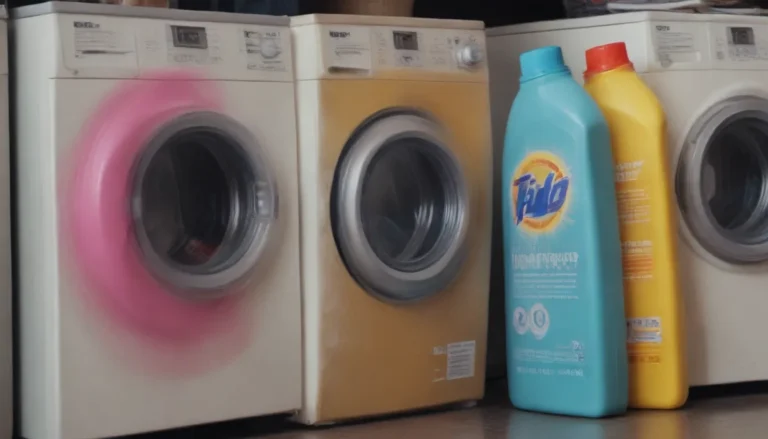Everything You Need to Know About Washer Settings for Clothes and Towels

Washing machines have evolved significantly over the years, from the old wringer washers to modern, high-tech appliances. While these new machines make doing laundry much easier, the abundance of settings available can be overwhelming. Choosing the right washer and dryer settings is crucial for ensuring your clothes are clean and well-maintained. In this comprehensive guide, we will walk you through the process of selecting the most appropriate washer settings for your clothes and towels.
Understanding Load Size Options
When it comes to doing laundry, selecting the right load size is the first step towards clean and fresh clothes. Before you start your wash cycle, take a moment to consult your washer manual for guidance on load size options. Here are some general guidelines to help you determine the ideal load size based on your laundry needs:
- Small Load: Ideal for a small amount of laundry, such as a few delicate items or undergarments.
- Medium Load: Suitable for average-sized loads of mixed clothing items.
- Large Load: Perfect for washing bulky items like towels or bedding.
- Super Large Load: Designed for extra-large loads of laundry, such as a week’s worth of clothes.
By following these load size recommendations, you can ensure that your clothes are properly cleaned without overloading your washer.
Choosing the Right Water Temperature
Selecting the appropriate water temperature for each load is essential for maintaining the quality of your clothes and preventing damage. Refer to the care labels on your garments to determine the recommended water temperature for washing. Here are some general guidelines for selecting the right water temperature:
- Cold Water: Ideal for washing delicate items, dark-colored clothing, and preventing shrinking.
- Warm Water: Suitable for most everyday laundry, including light to moderately soiled items.
- Hot Water: Best for heavy-duty fabrics and heavily soiled items that require deep cleaning.
Remember to always use cold water for the rinse cycle, as it helps save energy and prevent unnecessary shrinking of clothes. By sorting your laundry correctly and washing similar items together, you can achieve optimal washing results.
Understanding Washer Cycle Options
In addition to load size and water temperature, choosing the right cycle for washing and spinning plays a crucial role in the overall cleanliness and appearance of your clothes. Here are some common washer settings explained to help you select the most appropriate cycle for your laundry:
- Delicate, Hand Wash, or Wool: Designed for washing fragile or sensitive fabrics that require gentle care.
- Rapid Wash or Speed Wash: Offers a quick wash cycle for lightly soiled clothes when you’re short on time.
- Permanent Press, Wrinkle Control, Casual Clothes, or Dark Colors: Suitable for everyday fabrics that need a balanced cleaning approach.
- Normal: A standard cycle for average-sized loads with medium soil levels.
- Heavy Duty: Intended for washing heavily soiled items or sturdy fabrics that require deep cleaning.
- Bulky: Ideal for washing large items like bedding, towels, or bulky clothing.
- Sheets: Specifically designed for washing bed linens and sheets.
- Whites: Recommended for washing white fabrics to keep them bright and clean.
- Steam: Utilizes steam technology to remove wrinkles and stains from clothes.
- Rinse and Spin: A cycle dedicated to rinsing and spinning clothes after washing.
- Soil Level: Allows you to adjust the wash cycle based on the soil level of your clothes.
- Spin Speed: Enables you to control the speed at which your clothes are spun dry.
The quick wash setting is perfect for small loads of lightly soiled laundry that need a speedy cleanse. While delicate whites should be washed in cold water, heavier white items like towels benefit from a warm or hot cycle to ensure thorough cleaning. If you’re unsure about the symbols on your washing machine, refer to the manufacturer’s guide or manual for clarification.
Additional Laundry Tips
- How to Sort Laundry: Sort clothes by color, fabric type, and soil level to prevent color bleeding and damage to delicate items.
- Energy-saving Tips: To reduce utility costs, use cold water for rinsing and opt for lower spin speeds when possible.
By following these guidelines and selecting the right washer settings for your clothes and towels, you can prolong the lifespan of your garments and ensure they remain clean and fresh after each wash. For more information on laundry care, refer to resources like the Utah Education Network and the United States Department of Energy.
Whether you’re a laundry pro or just getting started, understanding how to select the appropriate washer settings is essential for achieving excellent laundry results. Take the time to familiarize yourself with your washer’s options, and soon you’ll be washing clothes like a pro!





